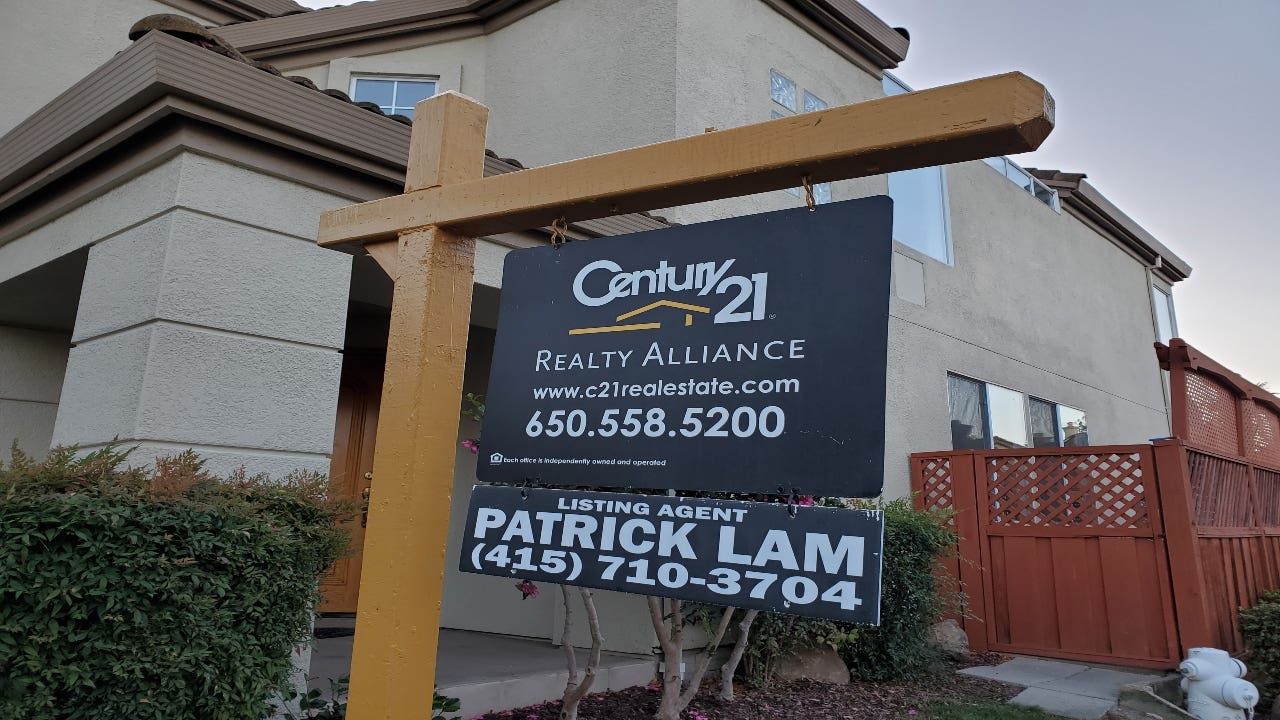Real estate commissions fall to new lows as homes fly off the market

The Bankrate promise
At Bankrate we strive to help you make smarter financial decisions. While we adhere to strict , this post may contain references to products from our partners. Here's an explanation for .
Forget 6 percent, once the going rate for real estate commissions. The average brokerage fee in the United States fell to an all-time low in 2020, remaining below 5 percent.
Real Trends, a Colorado-based research firm that issues a widely cited survey on the topic, says the average commission slid to 4.94 percent in 2020 from 4.96 percent in 2019 and 5.03 percent in 2018. Commissions typically decline in strong seller’s markets like that of 2020, a year when homes sold quickly and many sellers were inundated with multiple offers over the list price.
Realogy Corp., the nation’s largest broker, reports a different trend. Realogy — which owns the Coldwell Banker, Century 21, ERA and Sotheby’s International Realty brands — says the average commission rate at its company-owned operations rose to 2.43 percent per “transaction side” in 2020, up from 2.41 percent in 2019. If the listing agent and the buyer’s agent split the take equally, that would suggest an average commission of 4.86 percent last year.
A typical real estate commission costs as much as a used car
For consumers and Realtors, billions are at stake. Americans spent an estimated $86 billion in real estate commissions last year, according to Real Trends. On a $400,000 sale, a 6 percent commission would add $24,000 to the cost of the transaction, while a 5 percent fee would cost $20,000.
The commission trends seem to indicate that consumers have room to negotiate with their Realtors, a market reality that only intensified during the seller’s market of 2020. With most homes selling quickly and for more than asking price, sellers might be able to drive a harder bargain.
Commission rates have been falling steadily for decades, although they briefly bounced back during the Great Recession before resuming their long slide. It might seem counterintuitive, but consumers have proven willing to pay agents a higher commission rate in difficult markets.
For Realtors, the decline in commission rates has been offset by rising home prices. They get a smaller piece of the pie, but the pie is getting bigger.
In 2009, for instance, Realogy said half the commission was worth 2.51 percent. The company’s average home sale price was $390,688 that year, and the typical Realogy agent made $10,519 for representing one party in the transaction, the company told the Securities and Exchange Commission.
By 2020, Realogy’s average sale price had climbed to $553,081. So even though the typical take for half the commission had fallen to 2.43 percent, the typical fee for representing the buyer or seller rose to $13,990.
Meanwhile, commissions at Realogy’s franchise operations rose to 2.48 percent in 2020 from 2.47 percent per side in 2019.
How home sale commissions are set
A quick primer on how commissions are set: The seller negotiates a fee with the listing agent, typically 2 percent to 3 percent of the sale price of the home. The seller also decides how much to pay a buyer agent who brings a purchaser to the property; that number typically appears in the multiple listing service data about the property.
The National Association of Realtors, long fearful of allegations of antitrust violations, stresses that rates are set by individual agents and their clients. Realtors are quick to point out that they only get paid when a deal is consummated. All of the work they perform during property tours and open houses and home inspections is done for free, in anticipation of a pay day at the closing table.
Commissions are falling in part because consumers have been conditioned to push for better deals on everything.
“The continued decline in commission rates seems to reflect both rising housing prices, especially in higher-income urban areas, and an increase in consumer willingness to ask about these rates,” says Stephen Brobeck, senior fellow at the Consumer Federation of America.
Large numbers of real estate agents vying for a small number of deals also encourages Realtors to compete by cutting their fees.
“It’s supply and demand — there’s a lot of real estate agents,” says Mike DelPrete, a real estate scholar in residence at the University of Colorado Boulder.
Indeed, the National Association of Realtors has 1.4 million members. In 2019, NAR counted 5.6 million home sales, leaving just four transactions per Realtor.
Another factor affects the supply of Realtors: Getting a real estate license remains a notoriously easy exercise. Some states require more classroom time for hairdressers than for real estate agents.
“The barriers to entry to becoming a real estate agent are low,” DelPrete says.
Meanwhile, a crop of discount Realtors has been playing to consumer resentment about brokerage fees.
One high-profile discounter, Seattle-based Redfin, has been marketing itself as a cheaper alternative to traditional brokers. Redfin had touted listing fees of just 1 percent, although it has shifted to focusing on 1.5 percent listing fees.
In many metro areas, Redfin rivals are mimicking its business model.
“There’s a whole crop of Redfin juniors out there that offer to sell for a low rate or a low fixed fee,” DelPrete says.
Even so, the traditional real estate model has proven remarkably resilient, and some discounters have flopped. One splashy upstart, London-based Purplebricks, retreated from the U.S. in 2019 after attempting to woo American sellers with a flat fee of $3,200.
Commission rates rose during the last downturn
During the real estate boom of 2005 to 2007, commissions fell sharply. Then, during the Great Recession, they bounced back.
That trend was driven by a variety of factors. With less demand for homes, sellers proved more willing to pay for listing agents for their work. Home prices plummeted during the downturn, leaving Realtors less willing to accept discounts. And many agents left the industry, making the supply-and-demand equation more favorable for those who remained.
Traditional agents, for their part, stress the theme that sellers get what they pay for. A discounted commission is pointless if the cut-rate agent sells your home for less than you’d get by using a full-priced agent, says Elias Papdopoulos, owner of RE/MAX Unlimited in Brookline, Massachusetts.
“A lot of sellers have figured out that the lowest commission is not always the best,” Papadopoulos says. “It’s always the net the seller should be looking at.”
Learn more:
Related Articles




In a one-two punch for buyers, home prices rise as mortgage rates soar